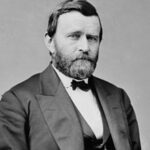The Whiskey Ring Conspiracy
The Whiskey Ring scandal erupted in 1875 when federal investigators uncovered a massive tax evasion scheme. Distillers and government officials conspired to defraud the Treasury of millions in whiskey taxes. President Grant’s private secretary, Orville Babcock, stood at the center of this corruption network. 💰 The conspiracy involved over 350 indictments across multiple states. Distillers bribed officials to avoid paying federal excise taxes on whiskey production. Revenue agents received kickbacks for falsifying records and ignoring violations.
Grant’s Controversial Defense of Babcock
Despite overwhelming evidence against Babcock, Grant refused to dismiss his trusted aide. The President provided a written deposition defending Babcock’s character during the trial. ⚠️ Grant’s loyalty to Babcock damaged his administration’s credibility significantly. Critics accused the President of prioritizing personal relationships over justice and accountability. Republican allies urged Grant to distance himself from the scandal.
Political Ramifications
The Whiskey Ring scandal highlighted systemic corruption within Grant’s administration. 📊 Treasury Secretary Benjamin Bristow led the investigation despite White House resistance. Grant’s defense of Babcock created a rift with his own cabinet members. The scandal reinforced public perception of widespread governmental corruption during the Gilded Age.
Impact:
Immediate Political Consequences
The Whiskey Ring scandal severely damaged Grant’s presidential legacy and Republican Party credibility. 🔥 Public trust in government institutions plummeted as corruption details emerged. Grant’s approval ratings declined sharply during his second term. The scandal contributed to Democratic gains in the 1876 congressional elections. Republican leaders distanced themselves from Grant’s administration to protect their political futures.
Treasury and Economic Effects
The conspiracy cost the federal government millions in lost tax revenue. 📉 Treasury estimates suggested the scheme defrauded taxpayers of over $3 million annually. The scandal prompted major reforms in tax collection procedures and oversight mechanisms. Congress strengthened internal revenue service operations to prevent future corruption. New accountability measures were implemented to monitor government officials’ financial activities.
Long-term Governmental Impact
The Whiskey Ring scandal accelerated civil service reform movements across the nation. 🌍 Public demands for merit-based appointments grew stronger following the corruption revelations. The scandal influenced the eventual passage of the Pendleton Civil Service Act in 1883. Grant’s loyalty to Babcock became a cautionary tale about presidential decision-making and accountability. The scandal reinforced negative perceptions of Gilded Age political corruption that persisted for decades.
